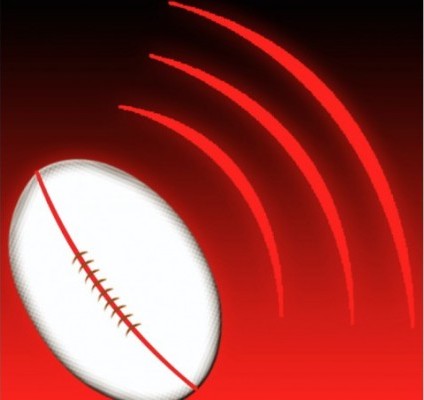Of Rugby and Football and a Super Bowl Rugby Team
Of Rugby and Football and a Super Bowl Rugby Team
Did you know the biggest weekend for football and the biggest weekend for rugby in America come within two weeks of each other?
Rugby players know. Feb. 1 we get to see the Seahawks against the Patriots, and then Feb 13-15 we see the USA 7s international tournament in Las Vegas. It’s a juxtaposition of the two sports that might be overlooked by many football fans, but there are some connections, as well as some glaring differences, between the two games.
First the connections. The Seattle Seahawks made news early in the season when Head Coach Pete Carroll shared his team’s defensive philosophy, which is in part centered on emulating rugby tackling techniques.
He brought in coaches from Serevi, a rugby coaching company based in Seattle whose namesake, Waisale Serevi, was the most exciting 7s rugby player of all time. The rugby style of tackling is making huge inroads into football because, as concussions continue to be a concern in the gridiron game, coaches have found that rugby tacklers have already had to learn how to protect their heads when bringing ballcarriers down.
So it is that a variety of pro and college football teams are now asking rugby coaches to show them how rugby players tackle. What they’ve found (as the Seahawks have demonstrated and any rugby player will tell you), the shoulder-first, wrap-and-drive or wrap-and-flip techniques are also more effective. Collision tackling can be impressive, but if you miss, it’s a big gain for the guy with the ball.
So you want to defend as well as the Seahawks? Ask your local rugby coach.
Smart football players know how to do this, and in fact on occasion you’ll see a few on the football field. The Patriots boast Nate Ebner, an excellent special teams player and backup defensive back. Ebner played rugby in high school and was the fullback for the USA U19 and USA U20 teams.
Ebner is a quiet guy who just gets the job done, and you might notice that, with some notable exceptions, many of the best football players are like that, too. As Marshawn Lynch famously said, “I’m all abut the action, boss.” That’s a rugby player.
Funny Cultural Things
Now, if you do go to Las Vegas, or turn on NBC to watch the USA 7s (the Olympic version of rugby), I’d like to say you’re going to see players treating the opponent respectfully, with no trash talk, no stupid end zone celebrations, and a distinct lack of whining. It’s true, you’ll see very little of that, but international rugby does look at the NFL and think about marketing itself a little better. So you’ll see a few little moves like the Discount Double-Check if not a bathing-suit-area grab. I personally don’t like the trend to ward those routines, but I find the NFL’s longtime battle against them (remember the Fun Bunch Redskins receiving corps in the 1980s?) even more annoying. The NFL hasn’t engendered a culture of mutual respect and honor, and so tried to legislate it.
It’s better to have that culture grow naturally, which, believe it or not, I think has happened somewhat in the NFL. It’s grown, I think, because with player movement more players have had former teammates around the league, and so there’s something of a player brotherhood. That’s rugby all the way. Every rugby player is a brother (or sister) to another. You can play against a guy one week and then be on an all-star team or the national team side-by-side a week later. That brotherhood keeps us respectful. Usually.
And yet, if you’re a football fan watching rugby, you’ll be shocked at a few things. Like when a player scores a breakaway try in rugby (a try is a touchdown), he might stand there for several seconds, slowly waiting for a defender to catch up to him, before consummating the score by touching the ball to the ground. Can you imagine a football player waiting at the one yard line for someone to catch him before stepping into the end zone? He’d be fined, he’d be vilified. In rugby, it happens all the time … I don’t really like it, but no one seems to have a problem with it.
You’ll also see blowouts. You’ll see a team up 42-0 and with the ball and ten seconds to go. That team will still try to score. This is a huge difference in culture between rugby and football. In football, even at the highest level, you take a knee and end the game if you can. And if you go for an extra touchdown just (it seems) to pad your stats, you’ll be on the receiving end of a hissy fit, and worse. In rugby all around the world, there’s no thought that running up the score is bad. What are you supposed to do? Stop playing? You can’t do that.
I was once in a rugby 7s game where my team lost 57-0 in 14 minutes. What did we do to the opposing team afterward? Shake hands. And maybe sulk a little bit.
We Can Live Together
Rugby in America is never going to be the NFL. It’s never going to sell out every single game in 70,00-seat stadiums (although a rugby game did sell out Soldier Field last year). But rugby is going to get bigger, and I hope as it gets bigger more football coaches, fans, and teams appreciate the game. If you’re a high school rugby coach, you could do worse, much worse, than having your players play rugby in the spring. In fact, what you should do is a) have one of your assistants take a rugby coaching course and help your local HS team out, and b) invite your HS rugby coaches to practice to teach rugby tackling techniques.
Football Players as Rugby Players
Now, just for fun, here’s a rugby team made up of the Super Bowl teams. I have chosen the players based on their skills and their perceived ability to adjust to the game. My only regret is I can’t find a place for Seattle punter John Ryan, who would be my kicker. So I guess someone else has to learn! Big linemen are out because rugby reuqires players to be a little lighter than what they are. The linemen-like positions in rugby - prop, hooker, lock - are populated by players with the right body type who have good ball skills and/or defensive ability. Flanker and linebacker are just so similar we have to have two linebackers there. No. 8 and tight end is a good fit, too.
At scrumhalf I have picked a tenacious player who I hope will learn to make a good pass. Scrumhalf and flyhalf are, combined, kind of like quarterback, and one quarterback playing on Sunday is also an elusive runner who can make things up as he goes, he's the flyhalf. The flyhalf has to be able to kick, too. I bet you Russell can do that.
Oddly, in rugby the backs - center, wing, fullback - are thought of as the more offensive players, and yet I have picked four defensive players there. Why? Because open-field tackling and speed are important. I pick a rugby player there to give his teammates a little help. I get the feeling no one will have any trouble hearing their fullback shout out instructions.
The Super Bowl Rugby Team
Prop LeGarrette Blount, New England
Hooker Robert Turbin, Seattle
Prop Marshawn Lynch, Seattle
Lock Cooper Helfet, Seattle
Lock Rob Gronkowski, New England
Blindside Flanker Bobby Wagner, Seattle
Openside Flanker Jamie Collins, New England
No. 8 Luke Willson, Seattle
Scrumhalf Earl Thomas, Seattle
Flyhalf Russell Wilson, Seattle
Left Wing Julian Edelman, New England
Inside Center Nate Ebner, New England
Outside Center Kam Chancellor, Seattle
Right Wing Darrelle Revis, New England
Fullback Richard Sherman, Seattle











